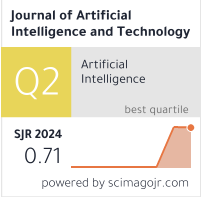Brain Tumor Segmentation Based on the Learning Statistical Texture
DOI:
https://doi.org/10.37965/jait.2023.0442Keywords:
brain tumor segmentation, convolutional neural networks, edge feature, multimodal information fusion, transformerAbstract
Achieving accurate segmentation of brain tumors in Magnetic Resonance Imaging (MRI) is important for clinical diagnosis and accurate treatment, and the efficient extraction and analysis of MRI multimodal feature information is the key to achieving accurate segmentation. In this paper, we propose a multimodal information fusion method for brain tumor segmentation, aimed at achieving full utilization of multimodal information for accurate segmentation in MRI. In our method, the semantic information processing module (SIPM) and Multimodal Feature Reasoning Module (MFRM) are included: (1) SIPM is introduced to achieve free multiscale feature enhancement and extraction; (2) MFRM is constructed to process both the backbone network feature information layer and semantic feature information layer. Using extensive experiments, the proposed method is validated. The experimental results based on BraTS2018 and BraTS2019 datasets show that the method has unique advantages over existing brain tumor segmentation methods.
Published
How to Cite
Issue
Section
License
Copyright (c) 2023 Authors

This work is licensed under a Creative Commons Attribution 4.0 International License.





